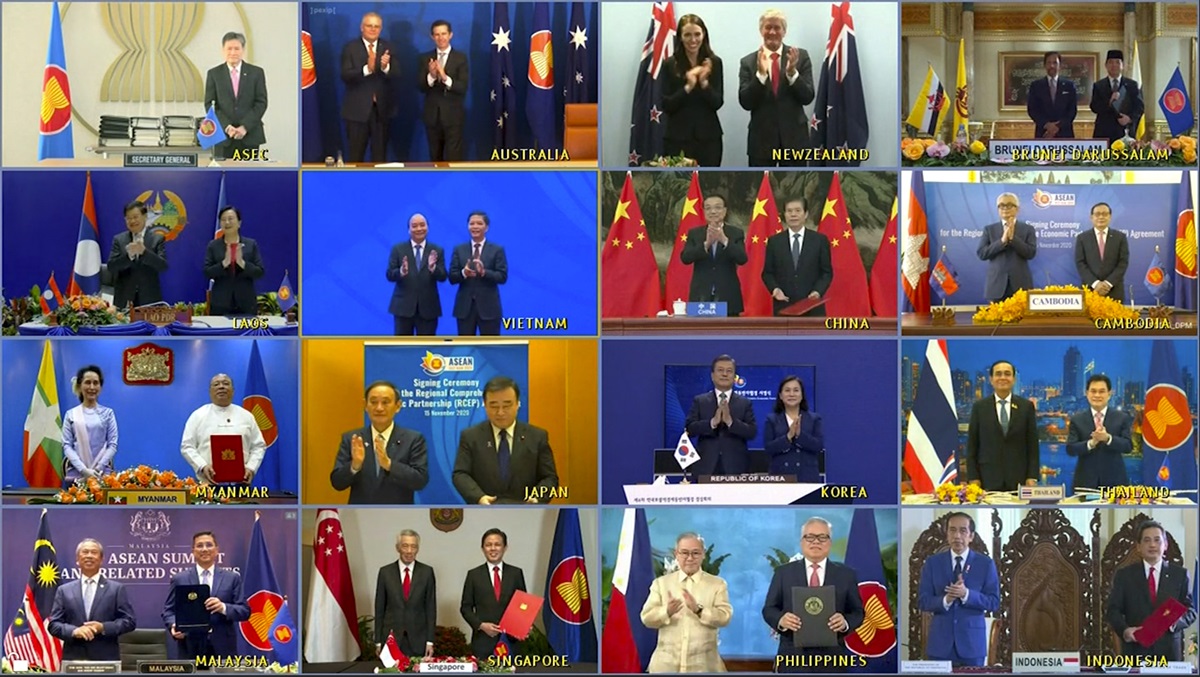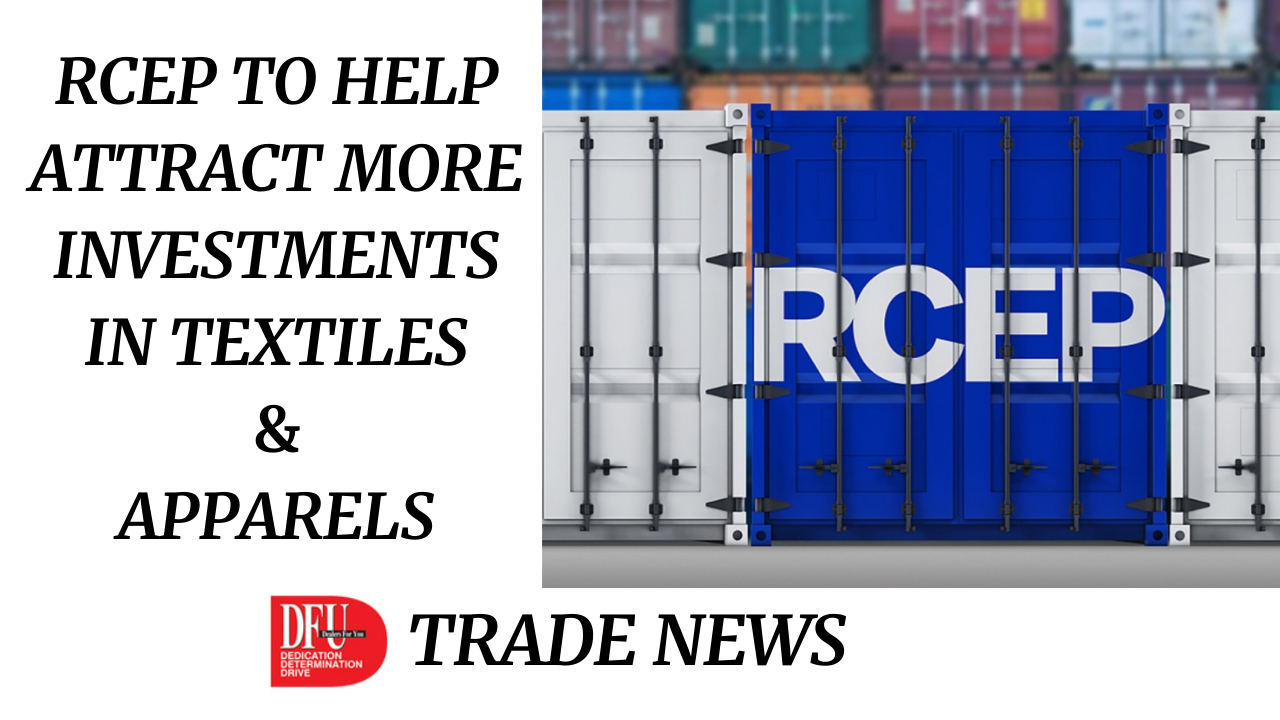The Regional Comprehensive Economic Partnership (RCEP) TO HELP ATTRACT MORE INVESTMENTS IN TEXTILES AND APPARELS (T&A)
_large.jpeg)
13 January 2022, Mumbai:
With the world’s largest free trade agreement, the Regional Comprehensive Economic Partnership (RCEP) coming into effect on first day of 2022, there is a great deal of apprehension over the changes it will bring.
KEY HIGHLIGHTS
- RCEP agreement was passed at the 21st ASEAN summit in 2012
- The agreement aimed to reduce tariffs and non-tariff barriers
- Its GDP accounts for 29.9 per cent of the world's GDP
Including the 10 ASEAN members, China, Japan, the Republic of Korea, Australia and New Zealand, the RCEP agreement was passed at the 21st ASEAN summit in 2012, says a CCF Group report.

The agreement aimed to establish a free trade agreement with a unified market by reducing tariffs and non-tariff barriers. The agreement encompasses the members’ trade in goods, services, investments, and rules
Around 27.4 per cent of global trade value
Accounting for 30.9 per cent of the world’s population, RCEP member countries have a population of 2.37 billion. Their GDP accounts for 29.9 per cent of the world's GDP, exports account for 39.7 per cent of the world's exports and imports account for 25.6 per cent.
The overall trade value of the RCEP member countries accounts for 27.4 per cent of the global. These countries are mainly exporters with imports forming a miniscule proportion of their imports.
Among the 15 RCEP countries, China accounted for 10.7 per cent imports and 24 per cent exports in the world, in 2019. It was followed by Japan with 3.7 per cent of imports and 2.6 per cent of exports. The third largest trading country was South Korea with 2.6 per cent of imports and 2.8 per cent of exports.
Textile and apparel exports account for 46.9 per cent
Of the total trade from RCEP countries, textile and apparel exports totaled $374.6 billion accounting for 46.9 per cent of the world, while imports totaled $138.5 billion, accounting for 15.9 per cent of the world. Vietnam, Cambodia, Myanmar, Indonesia and other ASEAN regions were the major exporters while China. Singapore, Brunei, the Philippines, Japan, South Korea, Australia and New Zealand were net importers.
RCEP to spike competition for local enterprises
The introduction of RCEP is likely to reduce tariffs among member countries and drop trade costs. This will lead to increased competition for local enterprises not only from domestic but also foreign brands, especially Chinese ones.
Except New Zealand, South Korea and Japan, other member countries mainly export clothing, supplemented by textiles, while Myanmar, Cambodia, Laos, Indonesia, Philippines, Thailand are largely importers.
The upstream and midstream end apparel users were highly dependent on imports, while developed regions such as Japan and South Korea mainly imported textiles and apparel, which were the main places of consumption.
Rise in overseas investments
The RCEP agreement can help significantly lower tariffs and fulfill the commitment to open investment in services. Reduction in tariffs will significantly improve the competitiveness of RCEP member countries.
Meanwhile the competitiveness of textiles and apparel from major production bases such as India, Bangladesh, Turkey and other major production bases has declined in RCEP. Investment barriers among RCEP member countries have also leading to a rise in overseas investment in the region.
Follow us on Linkedin & Youtube.

























